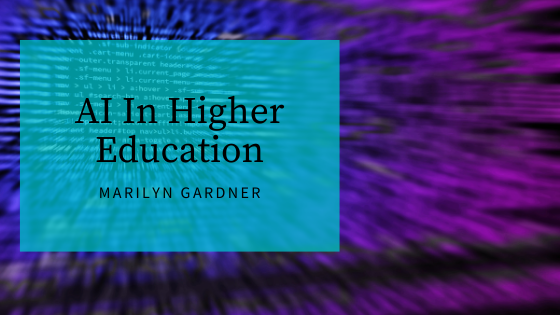The use of Artificial Intelligence (AI) in higher education is not new. Some schools have been using plagiarism-detection software like Turnitin for over a decade. What is new is the many ways that AI is being employed. It is now routinely used to predict potential student success, facilitate admissions decisions, encourage choosing a particular school, and even acts in the role of a traditional (human) teaching assistant.
AI is now being used in higher education to aid in admissions and financial aid decisions. Some colleges and universities use it to score student personality traits based on student-submitted videos. Other schools use AI software to predict the success of prospective students. AI is even used to review applications to some graduate schools.
Some colleges and universities use AI to encourage accepted students to place a deposit, essentially committing them to attend through the use of chatbots and text messaging systems.
Once a student is enrolled, the use of AI continues. Universities use it to monitor student activities that aid learning, answer student questions about coursework, and even determine what mode of online instruction would benefit a student the most based on student data. Oftentimes students are unaware that they are engaging with a computer program rather than a live human.
The use of AI in higher education does not come without its detractors. Many university professors have long opposed the use of plagiarism-detection software like Turnitin or machine scoring of student writing. Scholars at MIT, for example, wrote a nonsense essay that nonetheless scored highly on an AI-driven assessment platform. Other studies have shown similar results.
Despite any drawbacks to the use of AI in higher education, it’s unlikely to be disappearing from the scene anytime soon. AI can reduce the time it takes for colleges and universities to complete some of the rote and tedious non-academic work necessary to run institutions. It can also be used smartly to use data about individual student learning to boost performance and increase overall student success and retention. As more and more universities work to develop their own versions of AI that are tailored to their student populations’ needs, the software will become more effective in doing the work higher education requires of it.
